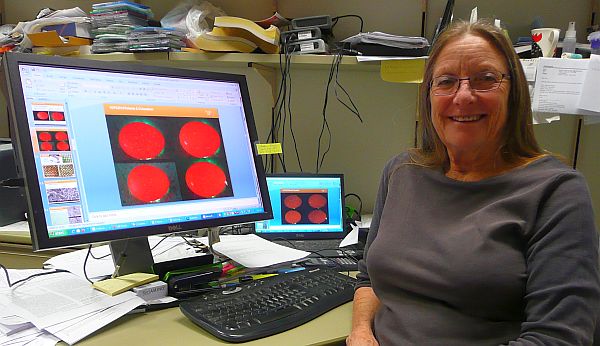In 2007 the NSW Food Authority and NSW Health investigated an outbreak of Salmonella poisoning caused by mishandling of raw egg foods. This is a common contributing factor in many Salmonella outbreaks, along with lack of cleaning and sanitising, and temperature abuse. This emphasises how essential it is that farmers implement effective measures to minimise contact of pathogens with eggs and practice good egg handling and hygiene measures on farm. These measures have become mandatory in NSW with the introduction of the NSW Egg Food Safety Scheme.
This demonstrates the relevance of a Poultry CRC project examining how defects in shell quality and structure may increase the risk of bacteria on the outside of the egg shell entering the egg. This research is being led by Associate Professor Julie Roberts at the University of New England in Armidale.
By investigating the incidence (and significance) of minor defects in the ultrastructure of the egg shell, such as translucency, the project aims to quantify the ease with which bacteria, which cause food-borne illness, are able to penetrate the egg shell. This involves a number of research approaches; traditional measures of egg quality, cuticle staining, shell ultrastructure assessment and microbial studies. Eggs are collected from a number of commercial farms for assessment. “We are still sampling and processing” said Julie, “A large sample size will give us a clearer idea of what is happening in the industry.”
The cuticle on the outside of the shell is the first line of defence against bacteria. By staining eggs, an indication of cuticle presence/absence can be made. “The reliability of staining as an indicator has been verified by a great deal of research, and this method is very easy for industry to adopt” said Julie. However, she notes the difficultly in generalising, as egg cuticle cover can be quite varied. “The usual trend is for a reduction in older flocks, but this is not always the case.”
Somewhat contrary to expectation, the research has found poor correlation between shell ultrastructure (the mammillary layer) and egg shell translucency. Translucency is related to the shell membrane, moisture and pores on the egg surface. “Usually, a freshly laid egg has low translucency which increases over time; and plateaus after about 6 days” said Julie. So now, using computed tomography (CT) technology, the focus has shifted to look inside pores (of roughly 20 microns in size) within the egg surface. One hypothesis being tested is that some parts of egg shell adjacent to pores may be less dense, resulting in increased translucency.
As serovars of Salmonella typhimurium are the most commonly known cause of food-borne illness in Australia, much of the microbial aspects of this research will focus on the movement of this gram-negative bacterium through the egg shell. This is tested by dipping an intact egg into a S. typhimurium bacterial suspension. However, as egg contents have anti-bacterial properties (e.g. antibodies in yolk) the potential for bacterial movement through the shell will be assessed by using the same method on eggs filled with agar. Again, to counter the naturally high variation in eggs, a large sample size is required to observe any significance in the results.
This project ties in with another CRC project headed by Dr Margaret Sexton, looking at ways to improve efficacy and safety of commercial egg washing. Together these projects aim to help increase the overall safety of egg products by reducing bacterial load, thereby resulting in a reduced incidence of food-borne illness outbreaks.
Tying the outcomes of this research to improved public health outcomes, Julie notes the tendency for some consumers to be complacent about food handling practices. “Many people can forget basic aspects of food safety with any animal products, including eggs”. Simple hygiene, like washing your hands before preparing food should not be overlooked. “If you are eating an egg raw or semi-raw, make sure it’s a good, clean and fresh egg”, concluded Julie.


